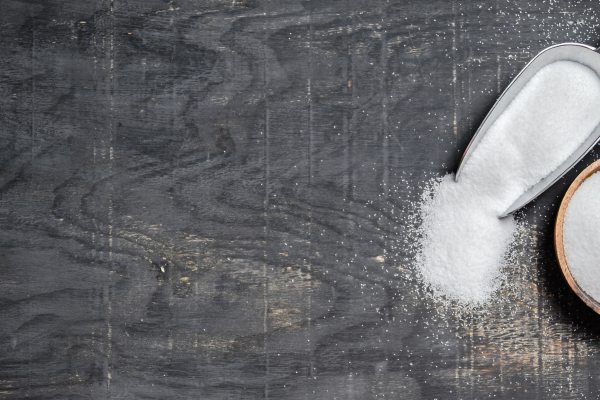Comparing Salt and Sugar: Which is Worse?
 Determining which substance, salt or sugar, poses a greater health risk is not straightforward, as both can significantly harm the body when consumed excessively.
Determining which substance, salt or sugar, poses a greater health risk is not straightforward, as both can significantly harm the body when consumed excessively.Table salt and granulated sugar are two commonly used white powders added to food. However, the real danger lies in the hidden additives abundant in processed and semi-prepared foods.
Fruit juices, ketchups, sauces, yogurts – sugar lurks in various products, even those not perceived as sweet. A glass of fruit juice can contain up to 25 grams of sugar – equivalent to 4 teaspoons!
Salt is a constant companion in soft drinks, sausages, semi-prepared meals, and chips. It not only enhances flavor but also increases thirst, leading us to consume more sugary drinks, thereby increasing sugar intake.
Ultra-processed foods contain excess not only of salt and sugar but also of calories, saturated fats, and trans fats.
Guidelines and Recommendations
The daily recommended salt intake is 5 grams. However, statistics show that people consume an average of about 12 grams of salt per day, nearly 2.5 times more than necessary for bodily functions.
The recommended sugar intake varies based on gender, age, and activity level. It's crucial to understand that sugar is not just a single substance but a mixture of glucose and fructose.
25-40 grams per day is the maximum allowable limit, but it's best to aim to limit both sugar and overall carbohydrate intake (up to 30-40% of daily caloric intake).
The Impact of Salt on Hypertension
For decades, it was believed that excessive salt consumption leads to fluid retention in the body, which in turn causes blood vessels to constrict and results in elevated blood pressure and hypertension.
Contrary to this widespread belief, a 2014 study conducted in France involving 8,000 participants found no link between the amount of salt consumed and systolic blood pressure levels. It's important to note that the study's findings apply to healthy young individuals; the influence of salt on blood pressure may differ in people over 50 or those with other medical conditions.
The Real Dangers of Sugar
A comprehensive health analysis of nearly 15,000 individuals revealed that excessive consumption of added sugar is statistically associated with:
Weight gain
Risk of developing abdominal obesity
Type 2 diabetes
Hypertension
Cardiovascular diseases
The World Health Organization's recommendations on sugar consumption are stricter than those of many dietitians. WHO allows for no more than 10% of daily caloric intake from sugar.
Salt or Sugar: Which is Worse?
Comparing salt and sugar in terms of harmfulness is not entirely accurate.
Both substances are found in large quantities in ultra-processed foods, a fact often overlooked. Rather than focusing on a specific ingredient, it's more practical to discuss common dietary mistakes:
Excessive calorie intake
Predominance of fast carbohydrates
Overconsumption of saturated fats
Lack of fiber, vitamins, and minerals
These factors together negatively impact health.
What Can You Do?
Limit the consumption of ultra-processed foods. Read labels and pay attention to the content of salt, sugar, and other nutrients. Emphasize fresh, whole foods in your diet.









